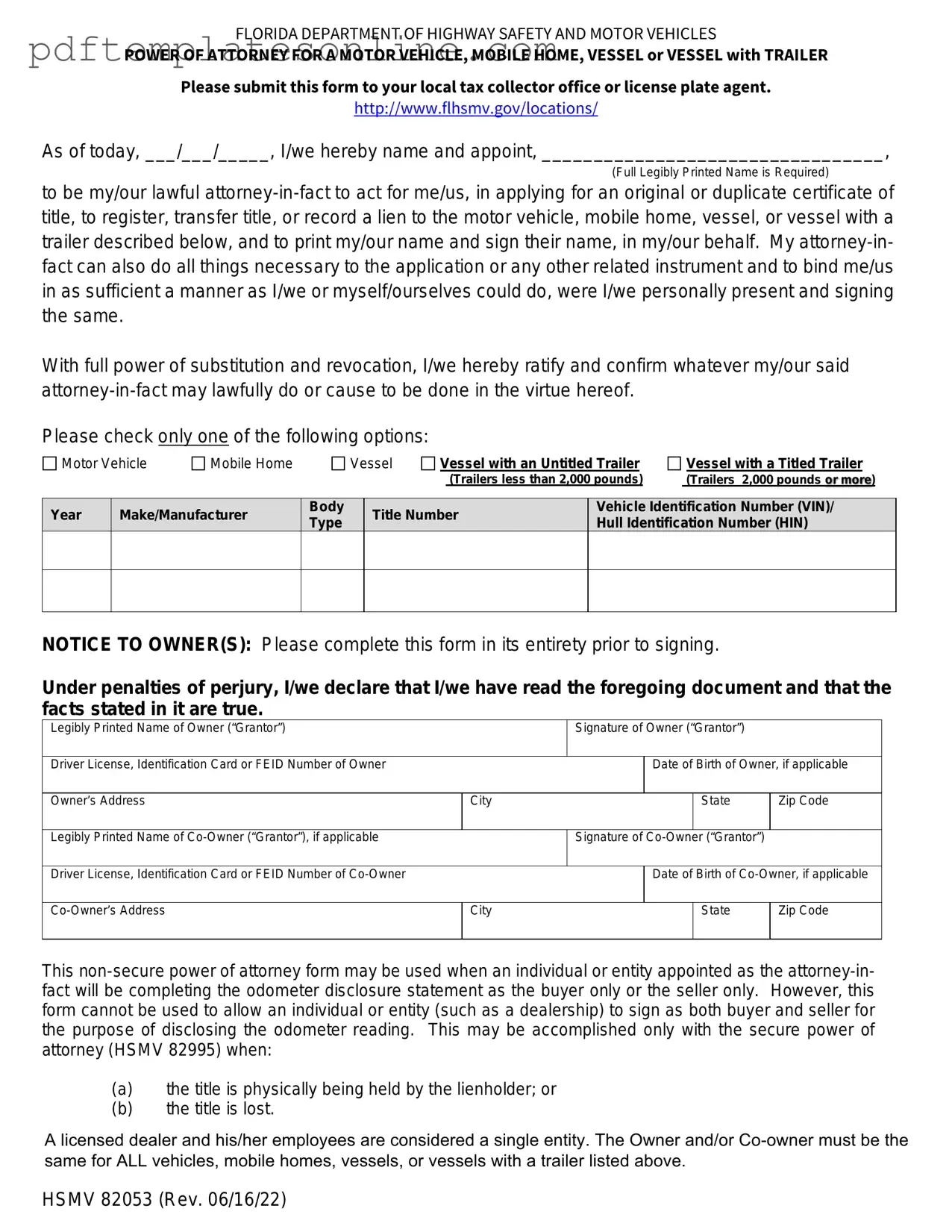Filling out the Florida Vehicle Power of Attorney (POA) form 82053 can be straightforward, but many individuals make common mistakes that can lead to delays or complications. One frequent error is failing to provide complete information. Each section of the form must be filled out accurately, including the names and addresses of both the principal and the agent. Missing details can result in the form being rejected.
Another mistake is not signing the form properly. The principal must sign the document in the designated area. Some people overlook this step or assume that a digital signature is acceptable without verifying the requirements. It is crucial to ensure that the signature matches the name provided on the form.
Many individuals also neglect to have the form notarized. In Florida, the POA form requires notarization to be valid. Without a notary's signature and seal, the document may not be accepted by the Department of Highway Safety and Motor Vehicles or other entities. This step is essential for the form to hold legal weight.
In addition, people often forget to include the date on which the form is signed. Omitting the date can create confusion regarding the validity of the POA. It is advisable to fill in the date clearly to avoid any potential disputes in the future.
Some individuals make the mistake of not specifying the powers granted to the agent. The form allows for a range of powers, and it is important to clearly outline what the agent is authorized to do. Leaving this section vague can lead to misunderstandings or limit the agent's ability to act on behalf of the principal.
Another common oversight is not checking for errors after completing the form. Simple typos or incorrect information can invalidate the document. Taking the time to review the form thoroughly before submission can prevent unnecessary complications.
People sometimes fail to provide a copy of the completed form to the agent. It is essential for the agent to have access to the POA to act on behalf of the principal. Without a copy, the agent may face challenges when trying to carry out their responsibilities.
Finally, individuals may not keep a record of the submitted form. Documenting the submission date and any correspondence related to the POA can be helpful in case questions arise later. Maintaining a copy of the submitted form and any supporting documents can provide clarity and reassurance.
